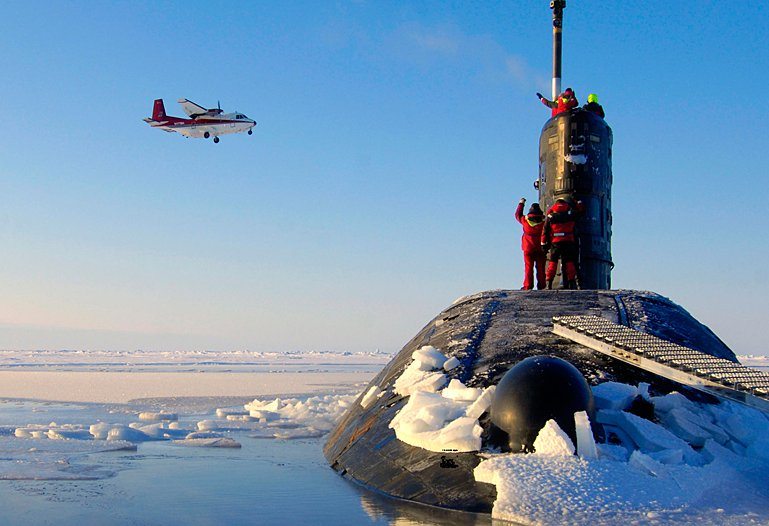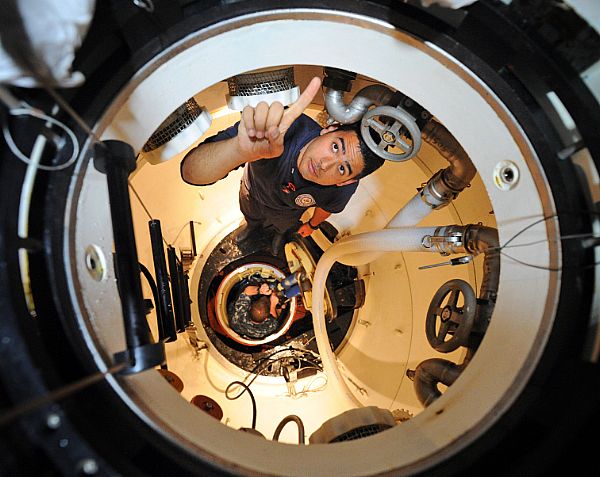Following the recent announcement that the next generation of submarines to carry the UK’s nuclear deterrent will be powered by a new nuclear propulsion system, the MOD’s Chief Scientific Adviser, Professor Mark Welland, here discusses the safety of the Navy’s nuclear reactors.
Through the Royal Navy’s nearly fifty years of operating nuclear submarines it has maintained an excellent nuclear safety record.
Today, the Royal Navy’s fleet of 11 nuclear-powered submarines play a vital role in our Nation’s defences. Four of these, the Vanguard Class, carry the UK’s nuclear weapon strategic deterrent. A further seven attack submarines fulfil a wide range of defence roles, including protection of the deterrent and UK forces, precision land attack utilizing Tomahawk cruise missiles, anti-ship and submarine war-fighting, and special forces, intelligence and surveillance operations.
All 11 submarines are powered by a pressurised water reactor (PWR) designed to cope with a hostile underwater environment whilst minimizing vulnerability to external factors including combat.
The Ministry of Defence has announced that the submarine to replace the Vanguard Class will be powered by a new nuclear power plant – PWR3. There has been speculation about the safety of the nuclear power plants in the current fleet of submarines suggesting that their design is similar to the design of the reactors at Fukushima and that the naval power plants at sea today do not have adequate safety systems; neither of these claims is true.
There are fundamental common requirements of all nuclear reactor plant designs, including the ability to maintain cooling whilst the reactor is operating and the ability to remove the heat that remains within the fuel for some time after the reactor is shut down.
Various designs of nuclear reactor plant operate across the world, with each design dealing with these fundamental safety requirements differently. The key here, however, is that our designs meet recognized and widely accepted safety requirements; we have a robust regulatory system in place to guarantee that this is demonstrably the case.
A PWR plant designed to power a submarine is very different in scale and design to the reactors at Fukushima. Whilst the precise details of what happened, and the lessons to be learnt, are still being captured, it appears clear that the resultant nuclear emergency was caused in part by the inability to circulate coolant through the shut-down reactors due to a loss of electrical power.
By contrast the nuclear power plants in all Royal Navy submarines are by design tolerant to a complete loss of power supplies as they switch to a passive cooling regime that utilizes the surrounding sea to maintain cooling to the reactor core.
Nevertheless, the Royal Navy is never complacent about the safety of its vessels; a review of the evidence from Fukushima is being conducted within the defence programme in parallel with the UK civil programme.
It is a fundamental tenet of reactor plant design that safety does not rely on a single system; safety is based upon a suite of reliable, well-designed and expertly maintained safety systems and protocols with built-in redundancy.
This applies to the ability to cool the reactor both while operating or during shut down, and the ability to replace coolant if lost due to a leak. Moreover the Royal Navy does not simply claim their reactors are safe; safety is measured and compared continuously against internationally accepted and extremely stringent standards. All Royal Navy reactor plants meet these standards, and further improvements are continually sought.
There are few countries that have the capability to design, build and operate nuclear submarines. Producing a small, highly robust reactor plant contained within a submarine hull, withstanding a hostile ocean and wartime environment, and yet safe enough for the crew to live within feet of the reactor core, is a remarkable achievement.
The United Kingdom is at the forefront of this advanced technology. To protect these advantages the Royal Navy takes operational security very seriously and, understandably, does not publish any details of submarine reactor plant design or operation.
Information security, however, is never allowed to take precedence over the safety of our reactors, and detailed scrutiny of submarine nuclear safety is carried out by expert personnel from within the Ministry of Defence, the Health and Safety Executive’s Office for Nuclear Regulation, and by independent nuclear safety assessors.
In addition, the Defence Secretary takes advice on the safety of the defence nuclear programme from a committee of wholly independent and renowned experts from industry and academia. Commodore David Langbridge, Head of the Defence Nuclear Safety Regulator, has recently stated that ‘the standards set for the safety of nuclear reactors are extremely high, and are met by all the reactors used by the Royal Navy’.
The Ministry of Defence is now designing the PWR3 power plant for the successor to the Vanguard Class that will come into service in 2028 and remain operational until at least 2060. This offers the next opportunity for a significant step change in the design of the submarine PWR.
Support from the US has helped us to innovate design in PWR3 to the highest international technical and safety standards, whilst, in addition, training UK designers and engineers in US advances in reactor plant design. While the existing PWR design continues to meet all of the required safety standards PWR3 can now be designed to be even more efficient, easier to operate, better value for money, and to set new standards of safety.
Today’s Royal Navy nuclear submarines are safe, and will remain so for the future. The selection of PWR3 to power the Vanguard Class successor represents a significant advancement in the continuous development of this remarkable and vital technology.











